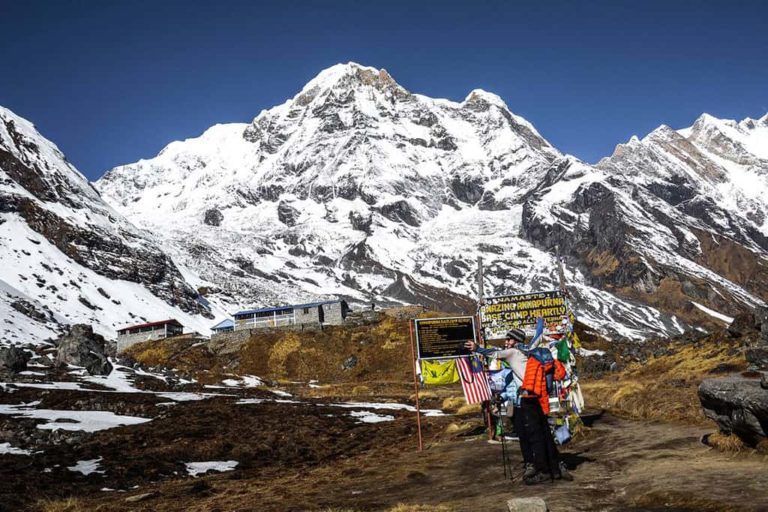1921 plan to make the first-ever British Mount Everest expedition trip to the world’s tallest peak due to the Great Trigonometric Survey in 1856. Until then, Kangchenjunga was widely recognized as the tallest peak in the world. The study helped people realize that the tallest mountain was an unknown peak, approximately 29,002 feet high.
Mountaineering was a relatively newer discipline, but the enthusiasm for this disciple was only growing. So, on the fifth anniversary of the United Kingdom’s alpine club, a strategic plan was devised for a British Reconnaissance of Everest.
Nepal and Tibet were closed to foreigners. However, Sir Francis Younghusband’s imperial and exploratory activities resulted in the Treaty of Lhasa, which resulted in Tibet opening its door.
The first Mt. Everest Expedition Team
General Charles Bruce was chosen as the man to lead the expedition. However, his military duties kept him away from participating in this mission.

Charles Howard-Bury was selected as the leader of the team as a result. It was just a reconnaissance expedition. The closest any person had got to Everest was 60 miles. The expedition kicked off in April 1921. There were two experienced mountaineers on the team, Harold Raeburn and Alexander Kellas.

Raeburn’s enthusiasm for Ornithology led him to high, soaring mountains in search of eggs and birds. People who knew him said that he trained as hard as nails, both physically and mentally. He joined the all-male Scottish Mountaineering Club in 1896, seven years after it was formed. It took only a few years for him to become the leading climber of the club. Later, he became the vice-president of this club. When he was asked to be the president, he declined the offer.

Alexander Kellas was a noted mountaineer. He was one of the earliest scientists to suggest the use of supplemental oxygen on high-altitude mountains. Alexander was the first person to climb the Mountain Pauhunri, which is 7,128 meters tall. He was also one of the first people to claim that Everest could be climbed without supplemental oxygen if the physical condition were not too severe.

George Mallory and Guy Bullock were also members of the team.
They were younger and had little experience in mountaineering. Both were graduates of Winchester college and had no Himalayan experience. George Mallory and Guy Bullock found a north access route to Everest to reach the North cole at 7,020 meters. The team also consisted of Sandy Wollaston, who was a naturalist and a doctor. Alexander Harold was a geologist. Henry Morshead and Edward Wheeler were also members. They were from the military. Various sources have said that this group was well-coordinated and disciplined. George Bernard Shaw said that they “looked like a Connemara picnic trapped in a snowstorm.” Of all, George was the only one who participated in the other two subsequent voyages. During the 1924 expedition, he and his partner Andrew Irvine disappeared on the North-East ridge. They were attempting to make the first ascent of Everest. Eyewitnesses say they were about 800 feet away from the final summit.
The First Expedition

The journey to Everest began in Darjeeling. Charles Howard-Bury gathered the local team, which consisted of Sherpas, Bhutias, Porters, and numbers of mules; the British Expedition was ready to scale the Everest. The climate was varying as they began their ascent. According to the expedition team, the weather changed from hot, humid, and rainy to cold, dry, and very windy.
They first reached Sikkim. Upon reaching Sikkim, they traveled to Tibet and on into the Chumbi valley. They then passed the Phari at 4,400 meters, crossed the Himalayan watershed at Tang La, and finally reached the Tibetan plateau.
They left the Lhasa road, and upon taking a westward course, the team reached Khampa Dzong. After reaching Khampa Dzong on 6th June, Kellas died suddenly because of heart failure. Rebaum got sick and had to leave for Sikkim immediately. The team still resumed the expedition and followed the trail of Arun river to the west.
At Shilling, they could clearly see Everest and gauge its topography. Finally, they reached the Tingri Dzong after traveling on through Shekar Dzong.
The Northern Reconnaissance
On 23rd June, Mallory and Bullock started off to the south. 16 Sherpas and porters accompanied them. At this point, hatred had already grown between them. When they were about to reach the Rongbuk glacier, they faced a difficult situation.
Upon facing it, they had difficulty negotiating 15-meters seracs. So, they retired back to the base camp, which had been set at 5,600 meters.
Rongbuk Glacier
It took six days for the members of the expedition to acclimatize to the existing environment. Mallory evaluated the western side of the North Col. It seemed like there was no feasible way to reach the North Col and above.
So Mallory decided that the west ridge must be explored for the final assessment.
West Rongbuk Glacier
On 5 July 1921, Mallory and Bullock climbed the 6,900 meters Ri Ring to get a better glimpse and gather more information. Two routes to Everest looked promising. Lho La, at the head of the Rongbuk glacier and an unknown col between Pumori and Lingtren.
They eventually reached the unnamed col by going west up, known as the Pumori glacier. From here, they could look down on the Khumbu glacier, which looked intimidating and equally dangerous. One of the crucial aspects of this expedition was exploration.
Therefore, for future use, they decided to take pictures. Mallory took the photos from the island peak, and Bullock reached the Lho La and captured the Khumbu icefall.
Eastern Reconnaissance
Journey to Kama Valley
They suspected that the river at Kharta flowed from North Col. So, they decided to set off upstream. The locals informed them about a different stream that goes towards the south that flows from the Chomolungma (it is the Tibetan name for Everest). Based on the locals’ intel, the team decided to travel to the Kama river valley.
They had already realized that they should return to the Kharta valley. So, they climbed the 6,520 meters Kartse and examined the North Col and the Kangshung face. From their perspective, the North-East ridge of Everest seemed too intimidating.
The North Col and the North ridge, above it, looked like the only possibility. Finally, they returned to Kharta following the descent from Kartse to the Kama.
North Col
The advanced base camp was set up at 5,300, and Camp 2 was set up at 6,100 meters. While this was happening, Mallory and Bullock were resting, and these camps were left unoccupied. They stayed at an advanced base camp until 20 September.
Then Mallory, Bullock, Morshead, and Wheeler traveled to Lhakpa La. They concluded that Camp 3 couldn’t be reached without an intermediate camp. So, they returned to Camp 2 and set off to Camp 3 with sixteen Sherpas. Mallory, Bullock, and Wheeler reached the Rongbuk glacier’s east side without loads and supplemental accessories while the rest of the party returned.
They reached the North Col after a harsh cold night in the snow. They thought of camping there, but strong gales forced them to return. They returned to Lhakpa La on 25 September, returned to Kharta, and eventually to Darjeeling on 26 September. The 1921 expedition was considered successful by experts and commoners alike.
They established that the oxygen cylinder was vital for survival on the chilling winds of Everest. Howard-Bury became a celebrity. The Royal Geographical Society awarded him the Founder’s Gold Medal for his leadership in the expedition. This significant event made careful observations and calculated measurements that helped Everest’s expedition to aspiring alpinists.






